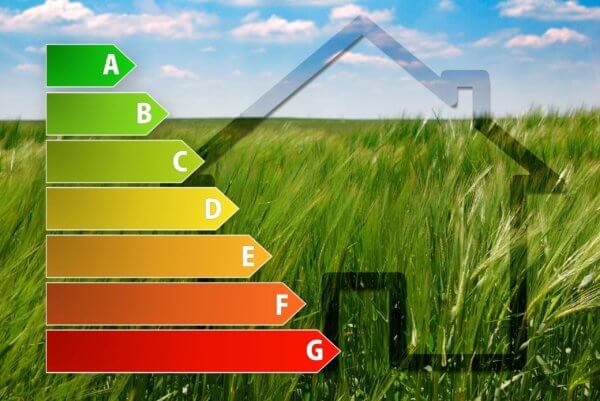How Can You Fix Uneven Temperatures in Your Home?
When you start to notice hot and cold spots around your home, the first thing you probably wonder is what you can do to get rid of them. Experiencing uneven temperatures around your living space is frustrating and uncomfortable, and it usually means that something is off with your household system. However, there isn’t one sure way to remedy those hot and cold spots. Because there are several potential causes for the issue, it’s often necessary to try out several troubleshooting methods to get your home’s climate back on track. Before you start panicking or replacing appliances, consider trying a few of these potential fixes to see if there’s a simpler solution.
Replace Your HVAC Air Filters
Many homeowners don’t realize that their uneven household temperatures may be caused by dirty or clogged air filters. When your HVAC filters become packed with contaminant particles, it starts to restrict the system’s airflow. That directly results in your heating and cooling units having to work much harder to circulate conditioned air, which can lead to certain areas of the home not receiving their fair share. Fortunately, if this is the cause of your hot and cold spots, it will be an extremely easy issue to fix. Simply switch out your HVAC air filters for brand new ones, and you should immediately notice a difference. And going forward, try to be proactive about replacing them before they become clogged.
Clean Your Vents
One or more of your household air vents could also be the cause of your hot and cold spots. Each area of your home has a dedicated air vent that all circulated air from your HVAC system must pass through. So, it stands to reason that if a vent was obstructed in any way, the temperatures in that part of the house would frequently be different than in other areas. So, one troubleshooting technique is to visit each of the vents in your dwelling and make sure that there isn’t furniture or clutter sitting in front of them. Then, take the protective vent cover off with a screwdriver and clean out the interior with a vacuum cleaner extension. This might not only fix your uneven temperatures, but it may also improve the indoor air quality of your home.
Schedule an HVAC Tune-Up
In many cases, the reason for uneven household temperatures is as simple as the HVAC system needing to be serviced. If you’ve been heavily relying on your heating or cooling system or it’s been several years since the last tune-up, it’s probably time to get that maintenance scheduled. During a service visit, your HVAC professional will make tweaks to your system, thoroughly clean it, and examine it for any mechanical problems. After the tune-up, your heating and cooling systems should be able to circulate air more smoothly and efficiently, which could result in the climate being more consistent around the house.
If you’re a resident of the greater Cincinnati, OH area, we at Crystal Blue Plumbing Heating & Air can handle your HVAC maintenance promptly and for a fair price. If our technicians find any issues, they can also provide whatever repairs are necessary to restore your system to tiptop condition.
Schedule a Duct Cleaning
One important ingredient to having even heating and cooling throughout your home is clean, healthy ductwork. If any areas of your air ducts are packed with contaminants like dust, dirt, mold, and random debris, it will be difficult for your HVAC system to move air through those ducts. As a result, some sections of your home will suddenly not be receiving the right amount of conditioned air. Plus, your HVAC system could potentially run into a mechanical failure due to the extra strain, and your energy bills will almost certainly increase.
When you hire Crystal Blue Plumbing Heating & Air to handle your duct cleaning, our team will clear all the pollutants and blockages out of your ductwork. Additionally, our professionals can inspect your ducts for any damage or leaks while they’re working. Leaky ducts are another potential cause of hot and cold spots, and they can also have various other negative effects on your home. Once you know about them, though, you can have them sealed up or repaired.
Seal Off Your Air Leaks
In many cases, all it takes is a couple of tiny air leaks to create consistently uneven temperatures in a living space. For example, if your bedroom window has a small leak, warm air is going to be escaping through it every time you run your heating system. And when that happens, your bedroom is obviously going to remain colder than other parts of your home. This situation can occur in any area of your household that features windows or doorways, and in addition to creating hot and cold spots, it can also worsen your HVAC system’s energy efficiency and force it to work harder.
If you feel like some rooms are often hotter or colder than others, it’s worth inspecting for any gaps or openings. Be sure to check around the edges of any doors or windows, and if you can’t find them visually, try feeling around for air movement with your hand. If you do find any air leaks, you’ll want to thoroughly seal them, and you can do so using caulk and weather-stripping from your local hardware store.
Switch Your Thermostat Setting
Typically, household thermostats will have two possible settings: “Auto” and “On.” Most homeowners opt to keep their thermostats set to “Auto” as that setting is usually the best for energy efficiency. When the thermostat is set to “Auto,” the HVAC system’s fan will only run while the system is cycling, and it will automatically shut off once it’s finished. Sometimes in this setting, the fan will turn off before the conditioned air has been evenly spread throughout the entire household.
If you switch your thermostat to “On,” the fan will continue running even after the cycling is finished, and it won’t stop until you manually shut it off. To keep your energy costs at a reasonable level, you probably don’t want to leave your thermostat on this setting for the entire day and night. However, if you set it to “On” and let the fan run for an extra 10 or 20 minutes after cycling, that may be enough to properly distribute the air to every section of your home. While there’s no guarantee that this troubleshooting method will be the fix you’re looking for, it’s free and easy to try, so it’s absolutely worth a shot.
Cincinnati’s Trusted Home Comfort Specialists
For over 50 years, we at Crystal Blue Plumbing Heating & Air have been proudly serving residents of the Cincinnati area. Whether you require heating, air conditioning, plumbing, indoor air quality, or ductwork services, you can count on our team to do a thorough, high-quality job. We’ve developed a reputation for professionalism, knowledge, and customer service, and you’ll see those things firsthand when you enlist our services. Give us a call today if you’d like to schedule an appointment!








